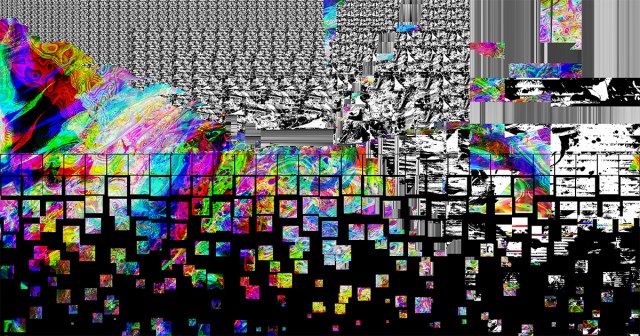TL;DR
- Author Neal Stephenson discusses the intersection between the metaverse and gaming, the involvement that AR/VR might play, the evolving role of IP, how artificial intelligence fits in, and where he gets all of his idea.
- Stephenson’s new creator-focused blockchain, Lamina1, is aimed at fusing Web3 smart contracts into creator tools so content creators are rewarded for producing experiences people will pay for.
- “Making things that work for successful creators is the key to a successful metaverse because nobody will use the metaverse unless there are experiences there that are worth having,” he says.
VIDEO TIMESTAMPS
0:00 – Introduction 1:20 – Tech’s highest impact position 4:45 – What is the metaverse? 7:04 – Interoperability 9:17 – Incentive alignment 14:00 – Immersion requirements 17:37 – VR engineering challenges 21:35 – Skeuomorphism 26:07 – Commercial VR/AR applications 29:44 – AI and gaming 33:38 – The value chain 42:02 – Right of refusal 46:25 – Good and bad tech 51:08 – Fighting “free” 54:44 – Building Lamina1 1:05:26 – Neal’s design designs 1:11:48 – Inspiration for Snow Crash 1:18:21 – Looking ahead from 2022 1:21:45 – Science fiction writing 1:23:36 – Carbon removal
READ MORE: Neal Stephenson on The Future of the Metaverse (a16z)
As someone who coined the term the “metaverse,” what does author Neal Stephenson think of the nascent metaverse today?
“In general, when people talk about the metaverse they talk about the next thing. If it exists today, it is largely a pre-metaverse,” he tells a16z podcast host Steph Smith in a recent episode. The exceptions, he says. are games like Roblox.
“If I see someone talking about our metaverse I don’t think they get it. But if they talk about building something in the metaverse it gives me more of a warm feeling about what they are doing. Because to me, there is just one metaverse. That does not mean the same thing everywhere. It is an incredibly diverse range of experiences, but you can always get from one to another by moving around within a single unitary space.”
As to whether interoperability is actively being developed by companies like Meta, Epic Games, Microsoft and others, Stephenson says the game developers and crypto evangelists don’t speak the same language.
“It’s an abomination to bring a lightsaber into Assassin’s Creed,” he provides as an example. “Game developers are insulted by this type of aesthetic mash-up of their creations.”
On the other hand, “other games like Fortnite and Minecraft are creative mash-ups by design,” and show the kind of metaverse imagined in Snow Crash.
When it comes to experiencing the 3D internet with VR headgear, he is not a fan. “I like to have an intense experience for half an hour, like a TV show, and then you stop,” he says. He doesn’t like being socially isolated or unaware of the physical world around him. “For all-day gaming binges I don’t think it’s for me.”
Stephenson worked at Magic Leap as a “futurist” for a while, and says most of his time was spent building content applications for audiences. “You are building an experience in a game engine and for it to work the environment has to be populated by imaginary entities and things that are in the user’s environment that are identified by machine vision [on the headset] and recreated in the virtual world.”
There’s a loop running all the time where the cameras and sensors on the device are scanning the real environment and building virtual assets in the metaverse.
Read It on Amplify: Web3 Is Broken. Can Neal Stephenson’s Blockchain for Creators Fix It?
After discussing the changing value chain of content creators and the impact that smart contracts royalty and copywrite have on blockchain and generative AI text-to-image tools like DALL-E, he moves onto his own fronted blockchain enterprise: Lamina1.
“Making things that work for successful creators is the key to a successful metaverse because nobody will use the metaverse unless there are experiences there that are worth having. Those people are by and large those who work in the games industry today. We think there’s an opportunity to make a new blockchain that works for content creators that integrates with their toolsets so they don’t have to become crypto experts in order to do their jobs.”
He adds, “Lamina1 is a proposal to hook Web3 smart contracts into creator tools so that content creators are rewarded for producing experiences that people will pay for.”
Lamina1 is intended to be carbon neutral by using a proof of stake system. He admits that, to some levels, we are still responsible for putting carbon into the atmosphere. So they’re going to design the system with carbon credit offsetting.
“There are multiple ratings agencies for carbon credit schemes. We’re also pursuing more far out ideas related to carbon sequestration — but these are in the gonzo, probably won’t work phase.”
NAVIGATING THE METAVERSE:
The metaverse may be a wild frontier, but here at NAB Amplify we’ve got you covered! Hand-selected from our archives, here are some of the essential insights you’ll need to expand your knowledge base and confidently explore the new horizons ahead:
- The Metaverse Will Make $5 Trillion By 2030. That Sounds Awesome and… Wait, What Are We Talking About?
- Metaverse Expectations vs. Reality
- A Metacode of Conduct for the Metaverse
- Metaverse Interoperability: Utopian Dream, Privacy Nightmare
- Consumers Are Confused About the Metaverse, But Seriously, Can You Blame Them?



